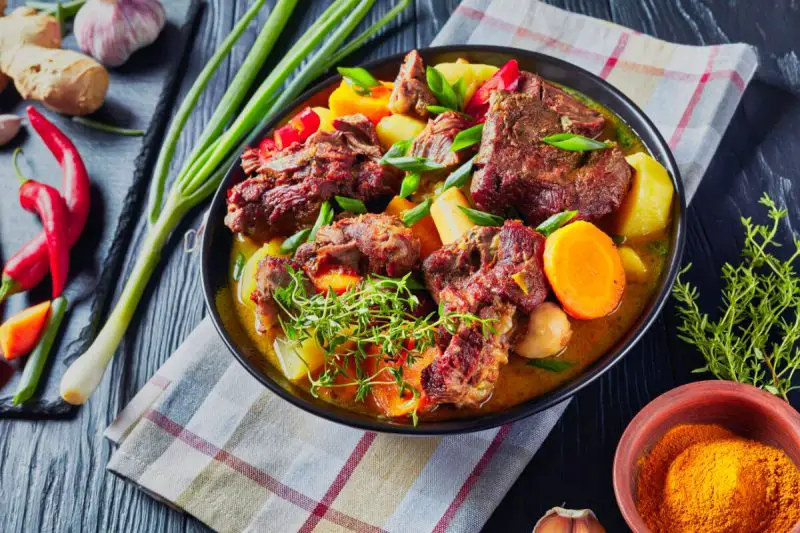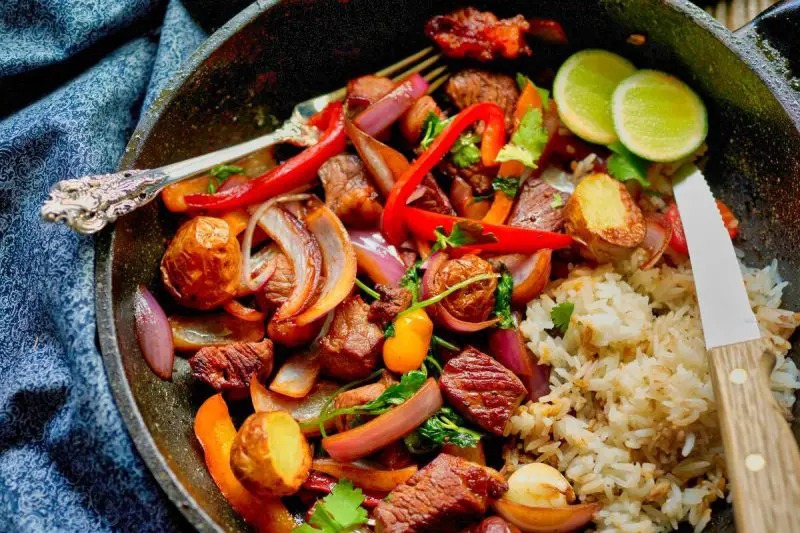Yemeni food is often prepared hot and spicy with the use of chili peppers, cumin, coriander seeds, turmeric, and other spices. Herbs such as fenugreek, mint, and cilantro are also used. Fenugreek is used as one of the main ingredients in the preparation of a paste or sauce called holba (also spelled hulba).
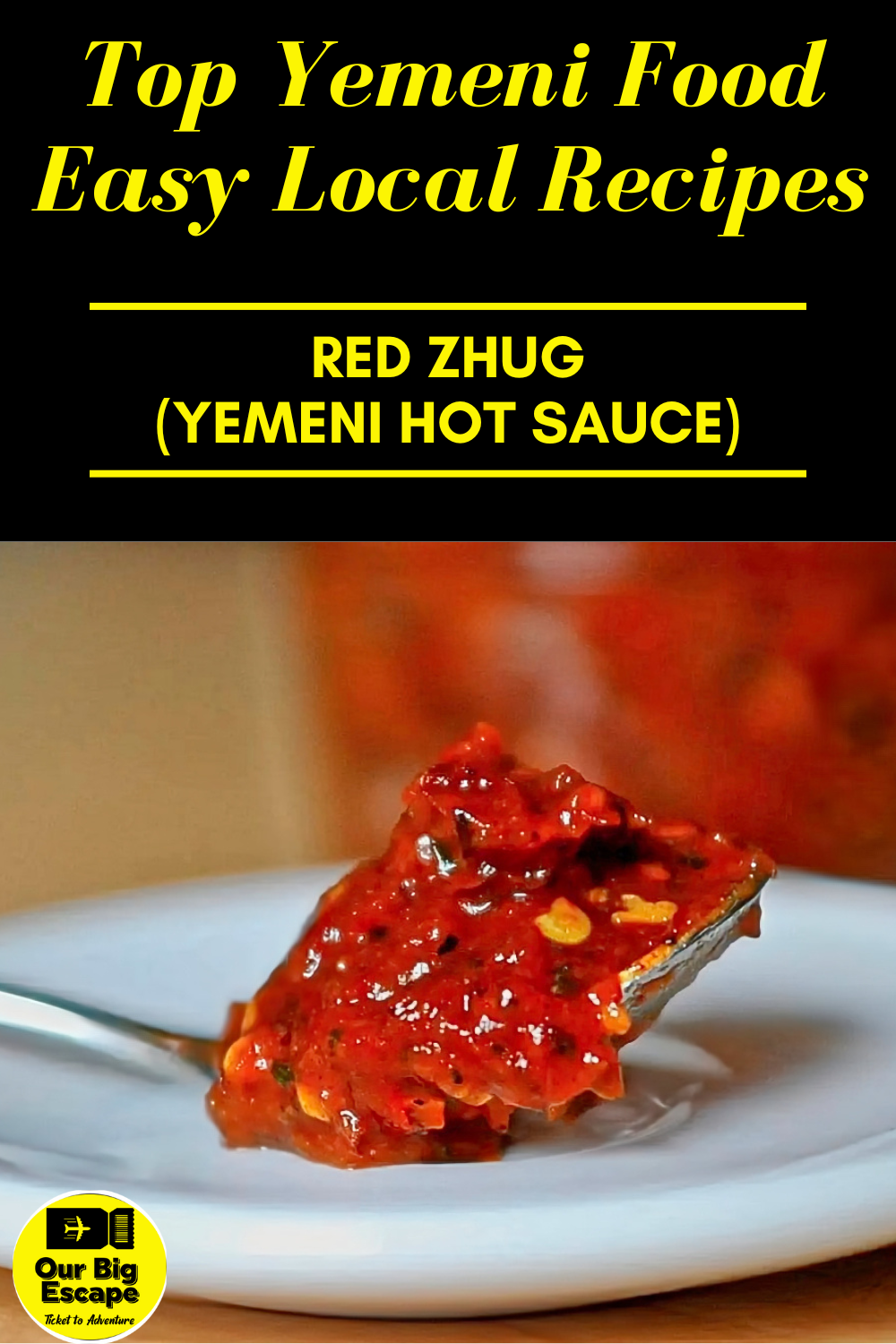
18 Top Yemeni Food With Easy Local Recipes
check out our video
1. Fasoulia (Kidney Bean Dish) from All Recipes
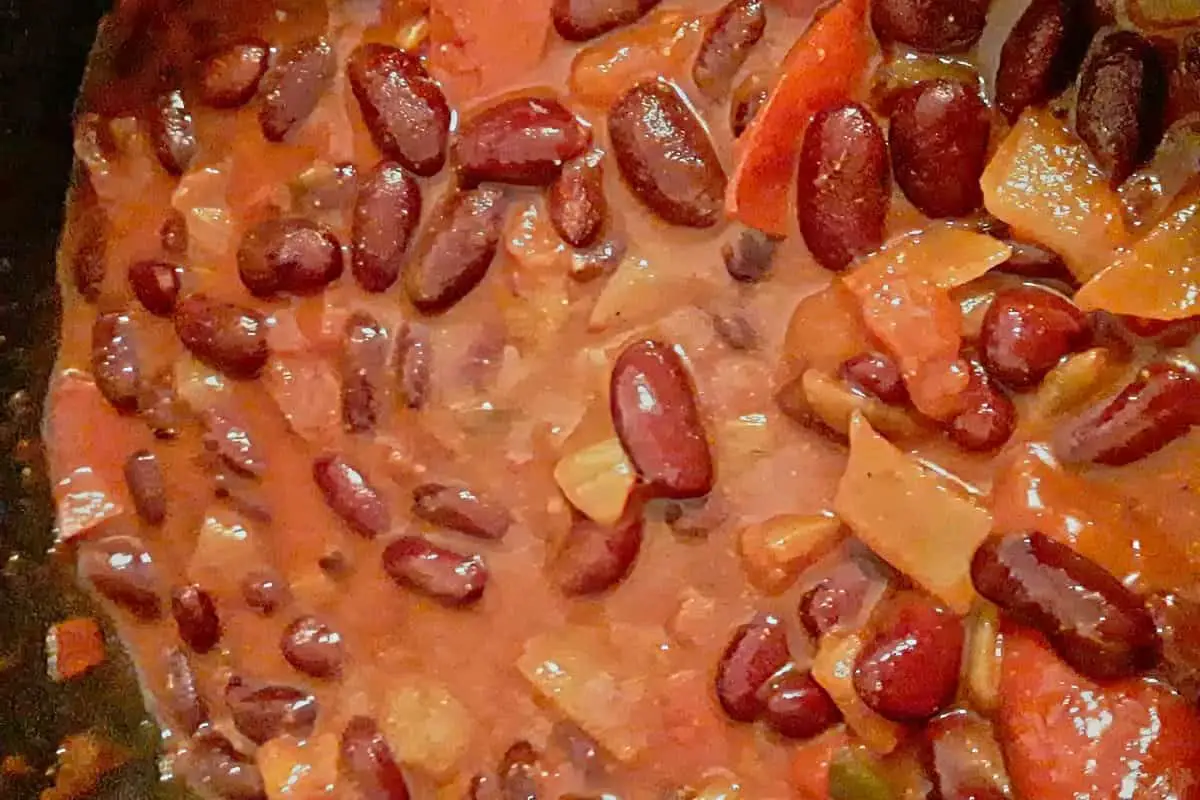
Fasoulia is a traditional Yemeni recipe for breakfast served in many Arabic countries. It can also be eaten for lunch or dinner in case you don’t have any meat on hand, as the beans are full of protein and fiber. Very delicious! Serve and eat the traditional way, by grabbing it with pita bread.
2. Yemeni Sayadieh (Seasoned Fish & Rice) from Medium
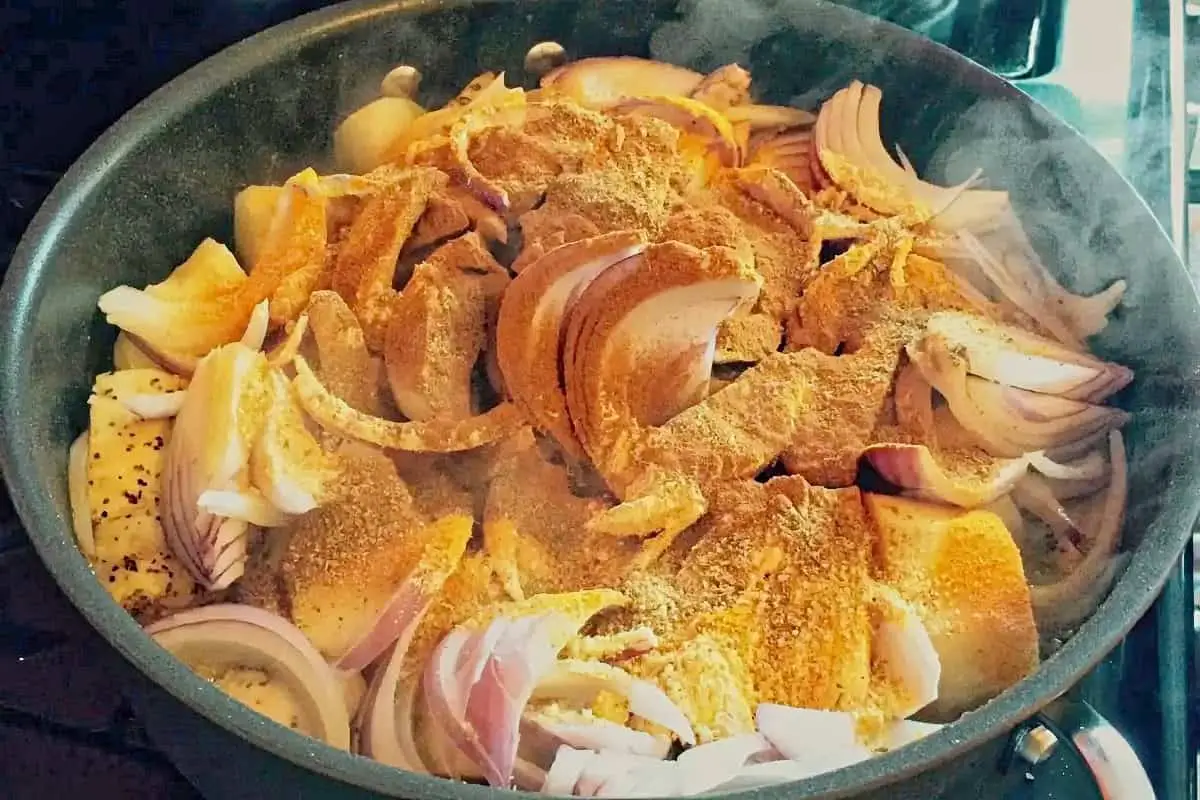
A delicious Middle Eastern Yemeni recipe of fish and rice, sayadieh is known for it’s warm spices and caramelized onions. This is a show stopping Yemeni recipe that actually just requires a few simple steps. You’ll love it!
Sayadieh is a seasoned fish and rice Yemeni food that originates in Lebanon. The word sayadieh roughly translates to “catch” so it basically means a fishermans’ catch.
One trademark of the Yemeni recipe is the spice mixture used to season the rice and the fish. It’s often sold as ready pre-mixed fish spices, but I made my own spice blend which is simpler and more accessible.
3. Malooga (Yemeni Bread Recipe) from Gayathri’s Cook Spot
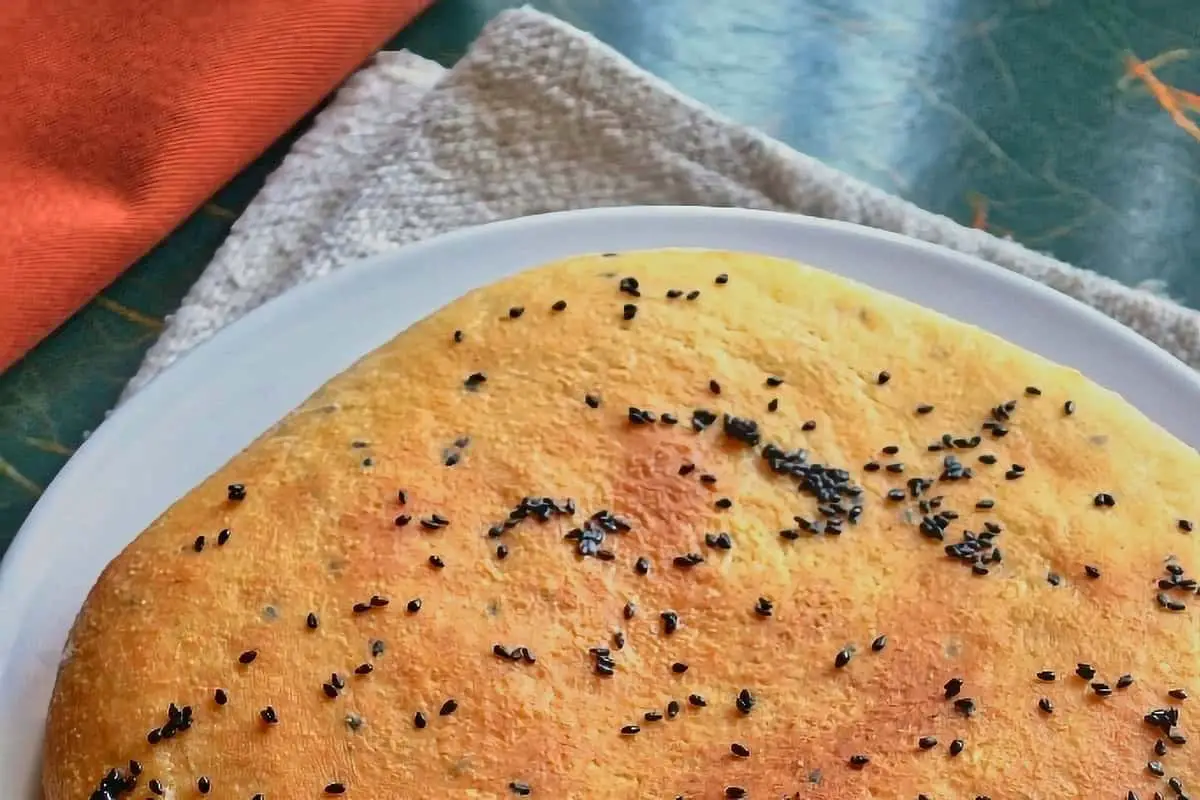
When I first saw the theme for this month’s Bread Bakers, I knew what to make. I have been making a list of flat breads to try and this Malooga was also in the list. Being an yeasted flat bread I chose it right away after reading about the theme. This month’s host Sonia selected the theme Flat breads with starter or yeast.
If you are a regular reader of my blog, you might know about my love for breads. I bake a bread whenever I get a chance and that is why I joined Bread Bakers, so that I bake at least a bread in a month. I got two recipes, one with flour and one with a combination of semolina and flour. Look at the bread. It has a nice crispy crust and soft layered crumb which was fabulous.
4. Thareed (Stewed Beef with Vegetables & Bread) from My Mother’s Kitchens
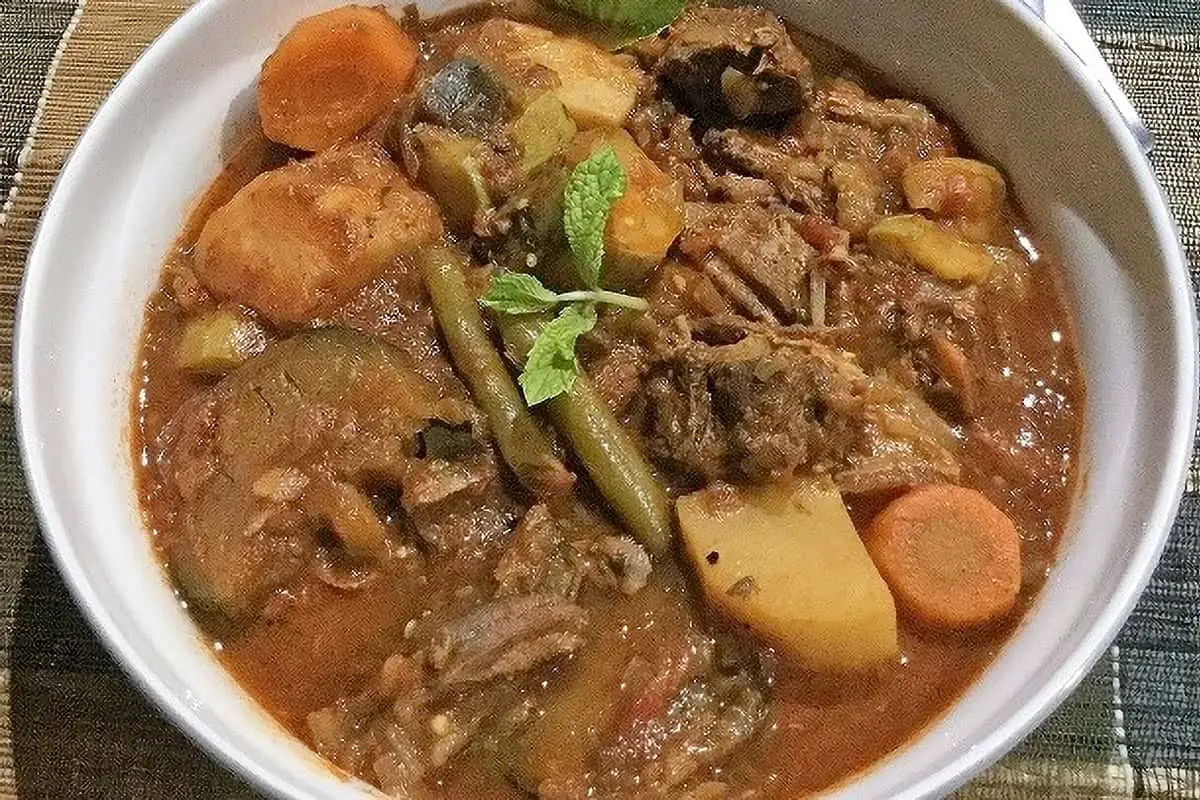
Thareed is a Middle Eastern Yemen food of red meat chunks with vegetables and thick sauce from tomatoes and tomato paste and served over pita bread or flatbread. The term literally means “stewed beef with vegetables and bread”. Therefore, it would be easy to find this Yemeni food with a variety of vegetables, which is virtually true in my mother-in-law’s kitchen. “Meat has to be cooked with vegetables” seems to be her implicit rule.
Thareed goes well with whatever choice of fresh vegetables you already have, like parsnips, carrots, okra, pumpkin, gourd, etc., and your favorite Middle Eastern spice mix. My humble opinion, thareed is meat stew, however it has more broth, to accommodate the pita or flat bread that goes with it when it is served. This Yemeni recipe is also called thareed laham.
5. Hawayej (Hawaij) Spice from Amira’s Pantry
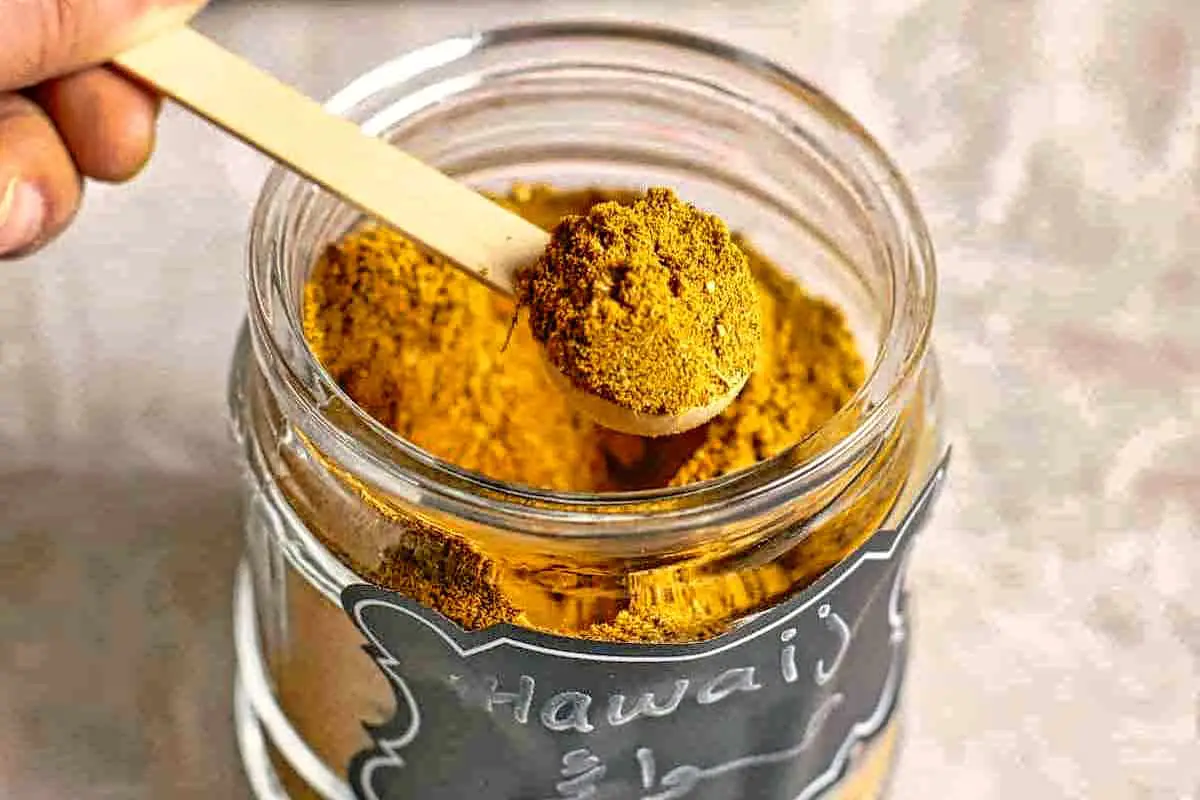
An all purpose very balanced spice mix to give more flavor to your dishes. An outstanding spice mixture that is very aromatic and can be incorporated in any dish. Here is how to make Hawayej spice blend.
Hawayej is a Yemeni spice blend that is so aromatic and speaks volumes of the traditional Middle Eastern spices. Use it to give earthy, floral and nutty characteristics to your dishes.
If you like to make your own spice mixes, I highly recommend this my grandmother’s Yemeni food that I grew up with.
6. Maraq Yemeni Recipe for Soup from Yemeniyah
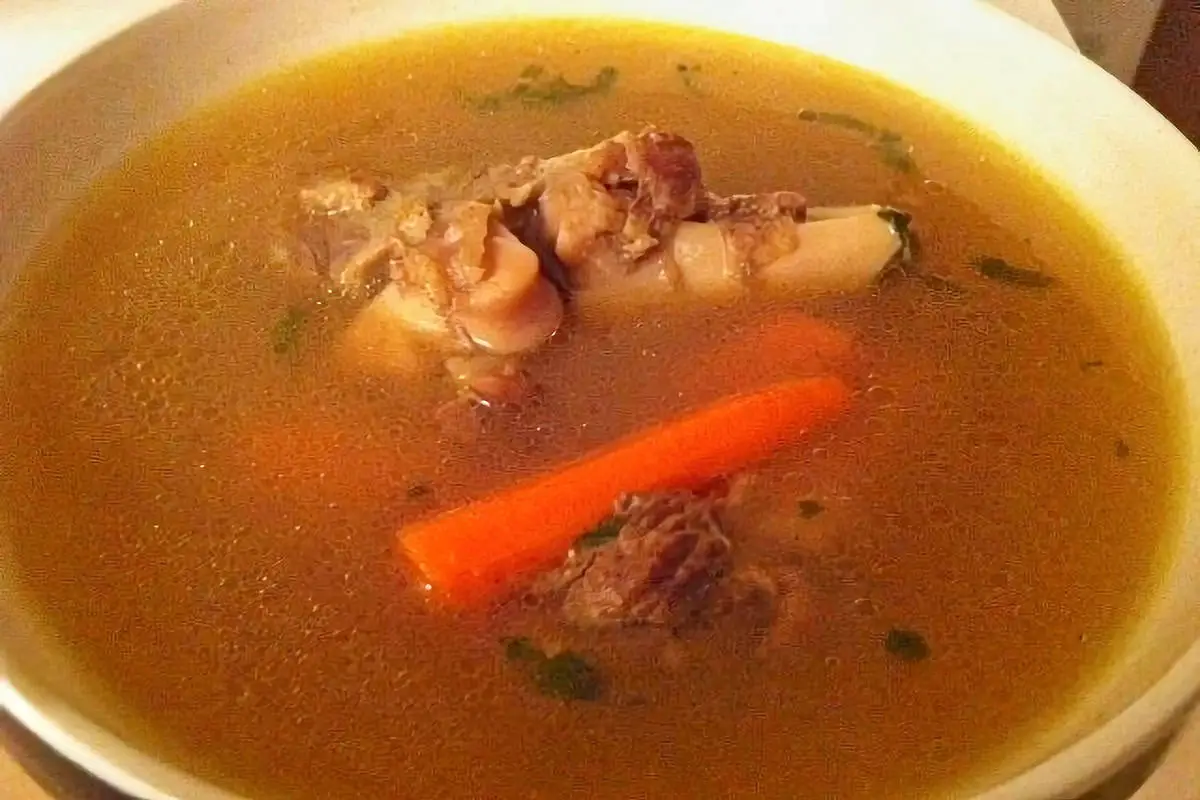
This is standard Yemeni soup. You will practically be ordering this if you ask for “Maraq” in a Yemeni restaurant, anywhere in the world. It’s served with fresh slices of lemon or lime that’s squeezed in for more flavor. We also make some “hulba” [fenugreek] on the side and then take a spoonful and mix it it as well.
7. Yemeni Chicken Mandi from Maroc Mama
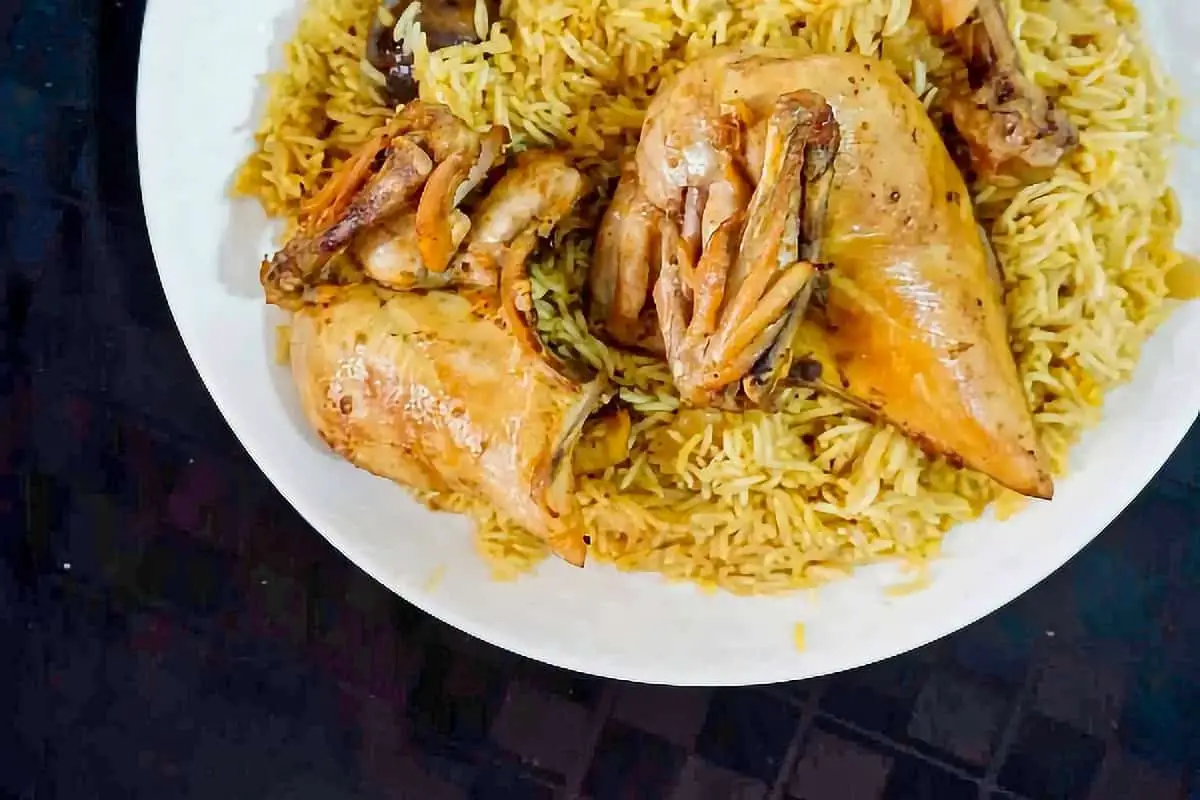
There are numerous chicken and rice dishes found throughout the Middle East and many are just slightly different from each other making it hard to tell them apart. But, they certainly are unique and special. Sometimes it’s the cooking technique, other times the spice combination or way of serving it.
If you’re looking for easy Arabic recipes than some of these combination rice and meat dishes are your best bet. Add a salad and you’ve got a meal!
Chicken Mandi uses a special spice blend called hawaij (Yemeni Recipe Above) as well as a special cooking technique. The meat in this Yemeni food is cooked inside a tandoor or clay oven – sometimes buried underground – which imparts a smoky flavor. The Yemeni recipe has several steps and is usually made for special occasions like weddings or Eid celebrations.
8. Malawach (Yemenite Jewish Pancakes) from Food 52

When’s the last time you had a flatbread that resembles a pancake and pulls apart like a croissant? That irresistible, buttery, flaky flatbread is Malawach. Yemenite Jews brought this traditional bread with them to Israel in the ‘50’s, and it was commonly eaten for breakfast where it was served with a drizzle of honey or with hard boiled eggs, grated tomato, and zhug (a Yemeni spicy herb sauce).
Malawach has since crossed over into mainstream Israeli culture, you’d easily find someone enjoying this flatbread as an afternoon snack or scarfing them down after a late night of drinking. These days, Israeli restaurants from L.A. to New York offer malawach on their menus, so its increasing popularity isn’t surprising.
9. Saltah from 196 Flavors
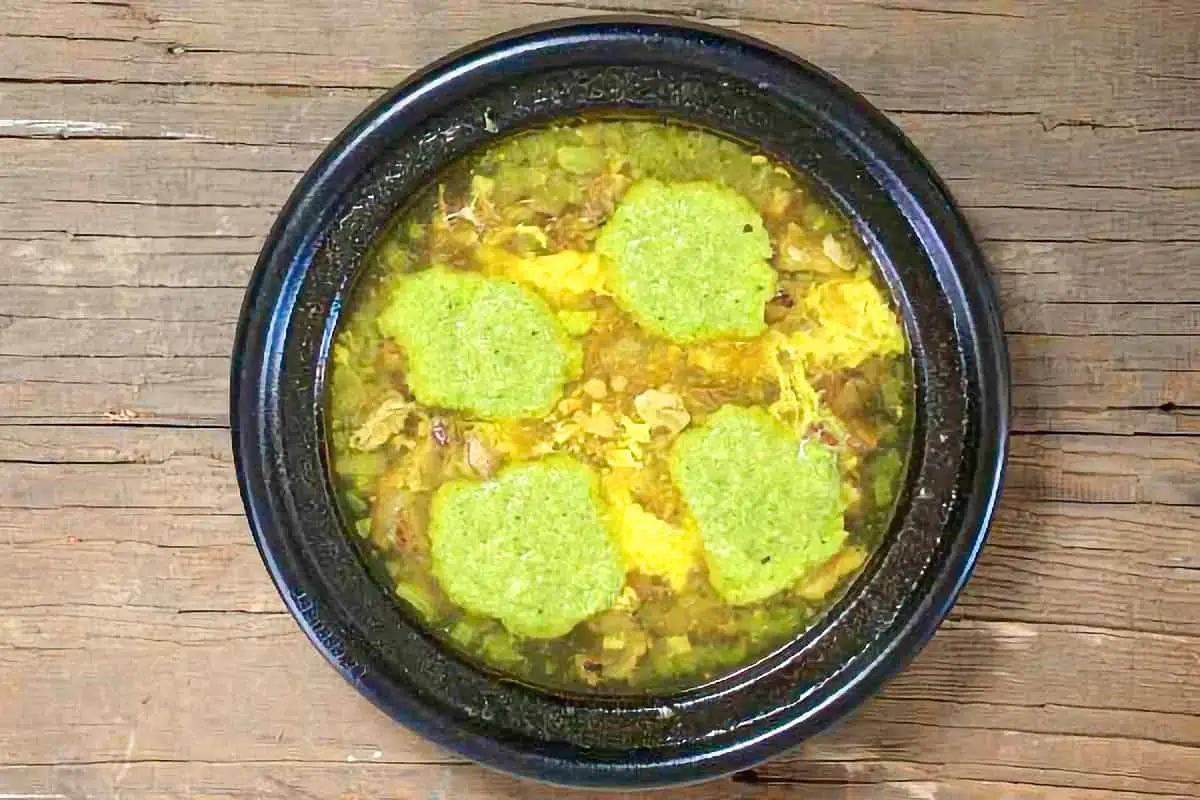
Saltah is a traditional Yemeni soup that consists of broth with meat and/or vegetables and that is topped with a fenugreek froth called hilbeh. The word saltah is derived from salatah meaning composition of vegetables, known internationally as salad. The term salatah probably arrived in Yemen with the Turkish troops during their many invasions of the country.
There are different versions about the origin of the saltah recipe, but the most common is that it was first created in the idamat, a common charitable home during the Ottoman Empire. This soup used to be made with leftover Yemeni food donated by wealthy families or mosques. These leftovers were mixed and heated in stone pots over fire for a long time.
Want more ideas to round-out your Recipe Box?
A lot of great options are in these posts!
- 22 Azerbaijan Food With Easy Spicy Recipes
- 13 Delicious Kuwait Foods & Top Recipes To Try
- 25 Fantastic and Authentic Jordanian Recipes
- 25 Best Authentic Israeli Recipes You Have to Try
10. Zurbian Yemeni Recipe from Shibam
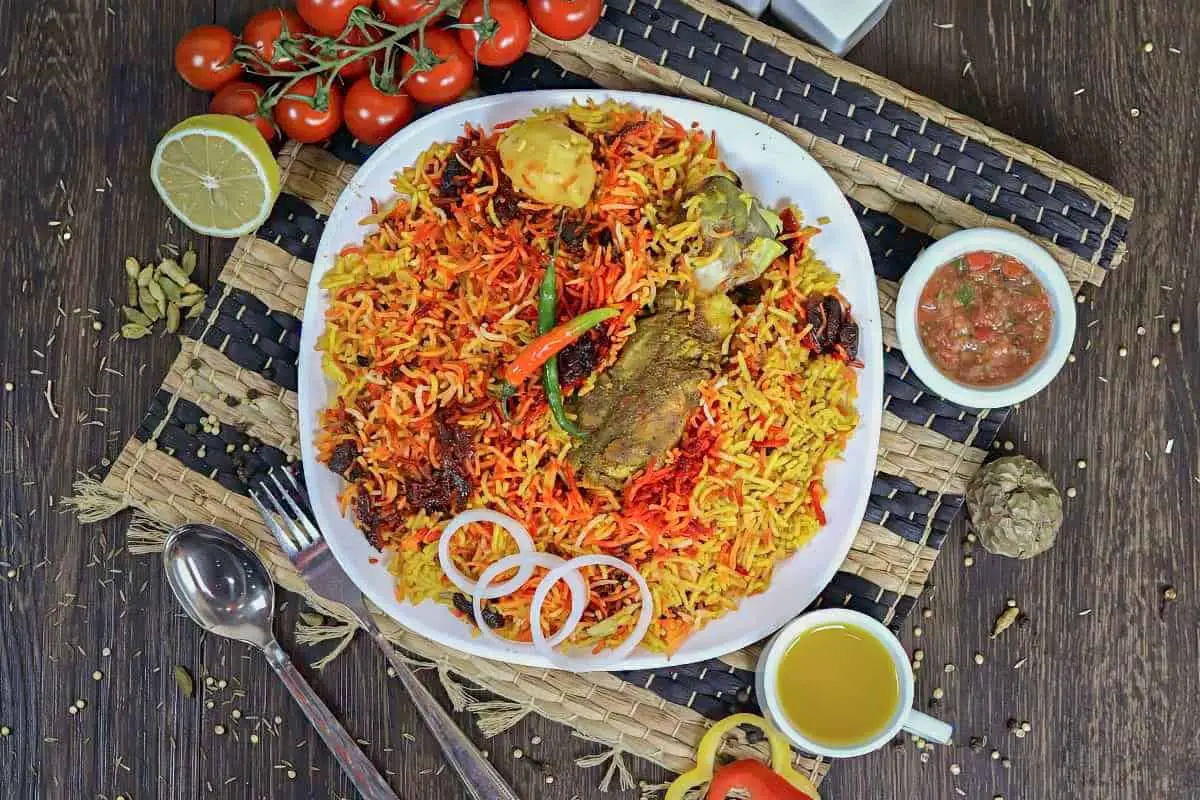
Yemen food served on special occasions evoke emotion. The smell, taste, and appearance transport you back to fun family get-togethers and festive gatherings. They remind you of good times and important people. Zurbian is a fragrant meat and rice Yemeni recipe that rouses such feelings for Yemenites.
Meat, rice, and spices cooked together is an ancient idea. Many cultures throughout the world have developed their versions of this common Yemeni food. Paella in Spain, pilau in South Asia, and biryani in India and the Middle East are all similar meat and rice dishes with unique regional tastes. Zurbian is a Yemeni take on this entrée.
11. Red Zhug (Yemeni Hot Sauce) from Sunnyside Hanne
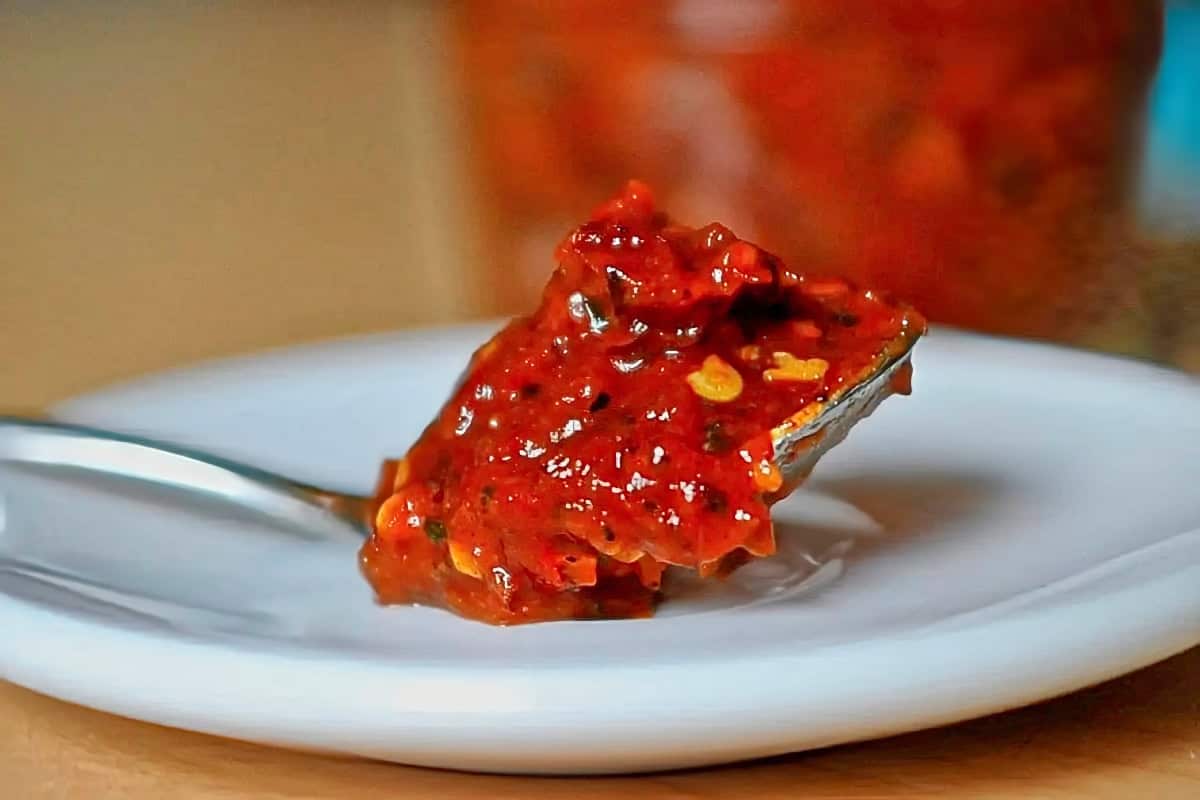
Green and Red Zhug are the the prevalent table seasonings in a yemeni household. Yes Zhug is spicy but it is also bright with lemon juice and has a depth of flavor beyond compare. It might just give Sriracha a run for its money.
One July night in Israel my boyfriend, Hanaan took me to a friend’s house for a classic Yemen food feast. Yemenis don’t eat, or snack or sup, they feast. Their fridge might contain a crust of bread. Yet when you sit down at their rickety kitchen table and share that crust of bread, you are feasting while ululating songs pour from the old transistor in the corner.
My friend Hanaan reached for the jar, placed a dab on his bread, took a nibble and began fanning his mouth. Our introduction to Zhug.
12. Lamb Haneeth from Every Little Crumb
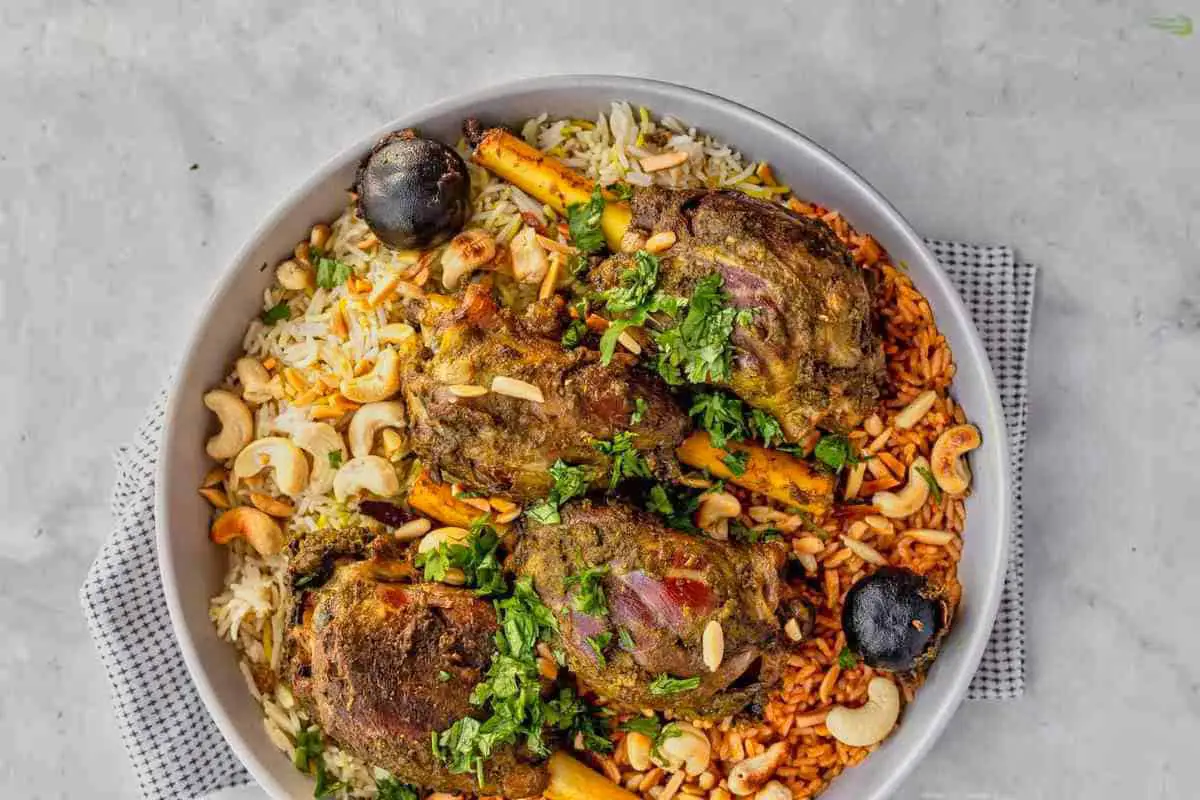
Haneeth is a very popular Yemen food of slow roasted lamb that’s marinated in a mixture of spices and slow roasted until the meat is so tender it nearly falls off the bone. It’s usually served with basmati rice (which is usually also spiced but can be plain). It’s a very typical celebratory Yemeni recipe served at festivals and weddings, and very common in Yemeni restaurants around the world.
It’s the most tender way I’ve ever cooked lamb before. It helps that I used lamb shanks, but the resulting meat was cooked absolutely perfectly.
The combination of spices is so flavorful, but accessible too. Some people use a ready made spice mix (Yemeni Hawaij spice) but this isn’t always easy to find, so using your own simple spice mix simplifies things.
13. Jachnun (Yemenite Breakfast) from Food Lizsteinberg

Jachnun is one of those Yemen food dishes that everyone loves but few actually make themselves. These rolled sticks of dough are a Yemenite Jewish food. The Yemen food is one of many slow-cooked Jewish foods invented to be prepared a day in advance and baked all night long, so that there would be hot food on the sabbath, when lighting fires is prohibited.
Brought over by Yemenite immigrants from Aden, jachnun was warmly embraced by Israeli society as a whole. Originally, it was baked under the coals in families’ outdoor tabouns, recall immigrants’ children. It’s traditionally served here with grated fresh tomato, skhug (Yemenite hot sauce), and a hard-boiled egg, cooked in the pot along with the dough.
14. Yemeni Bread from My Favorite Pastime
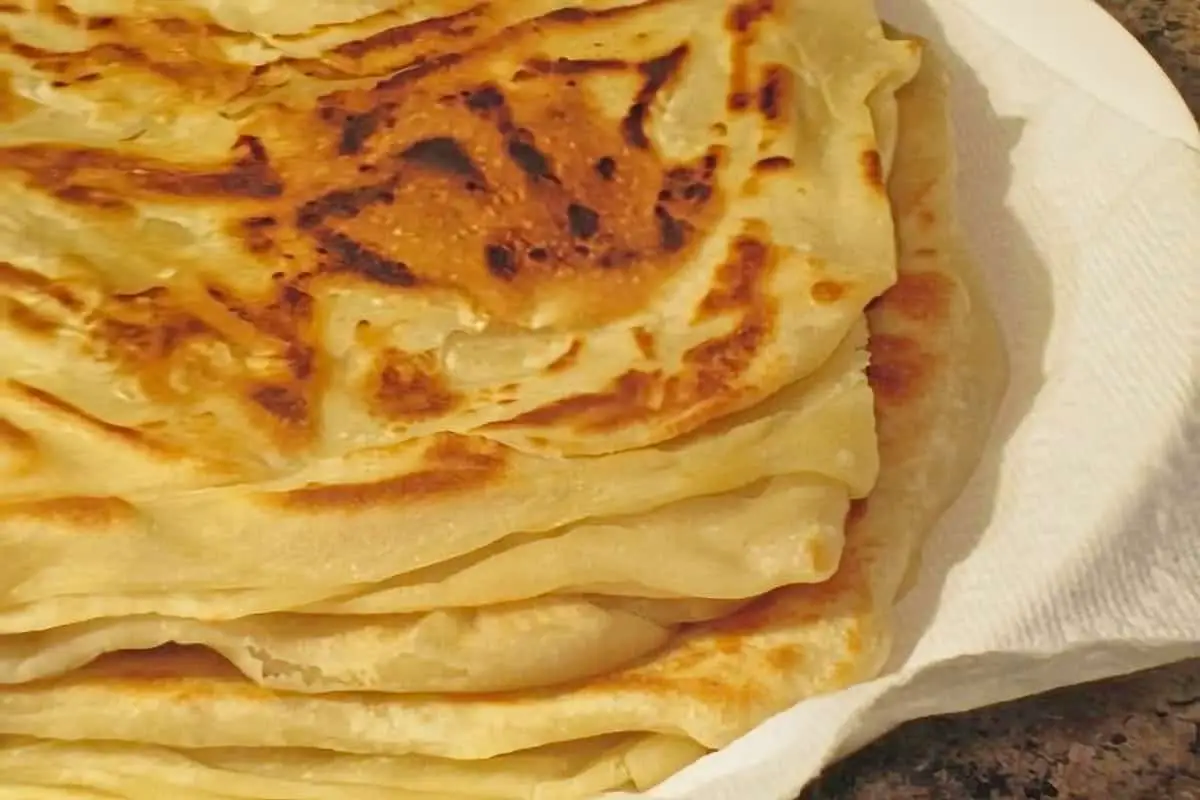
I had been wanting to make Yemeni Bread. That day I had planned to make some roast chicken and potatoes for dinner. The chicken had already been washed and trussed, and rubbed with herbs and spices, so this part of the plan could not be changed, but the potatoes were still sitting in a bag, in the cold room, so they were hurriedly tossed aside.
That night we had roast chicken and Yemeni Bread. A strange combination perhaps but the excitement and expectation, overrode everything.
15. Green Schug (Hot Sauce) from May I Have That Recipe
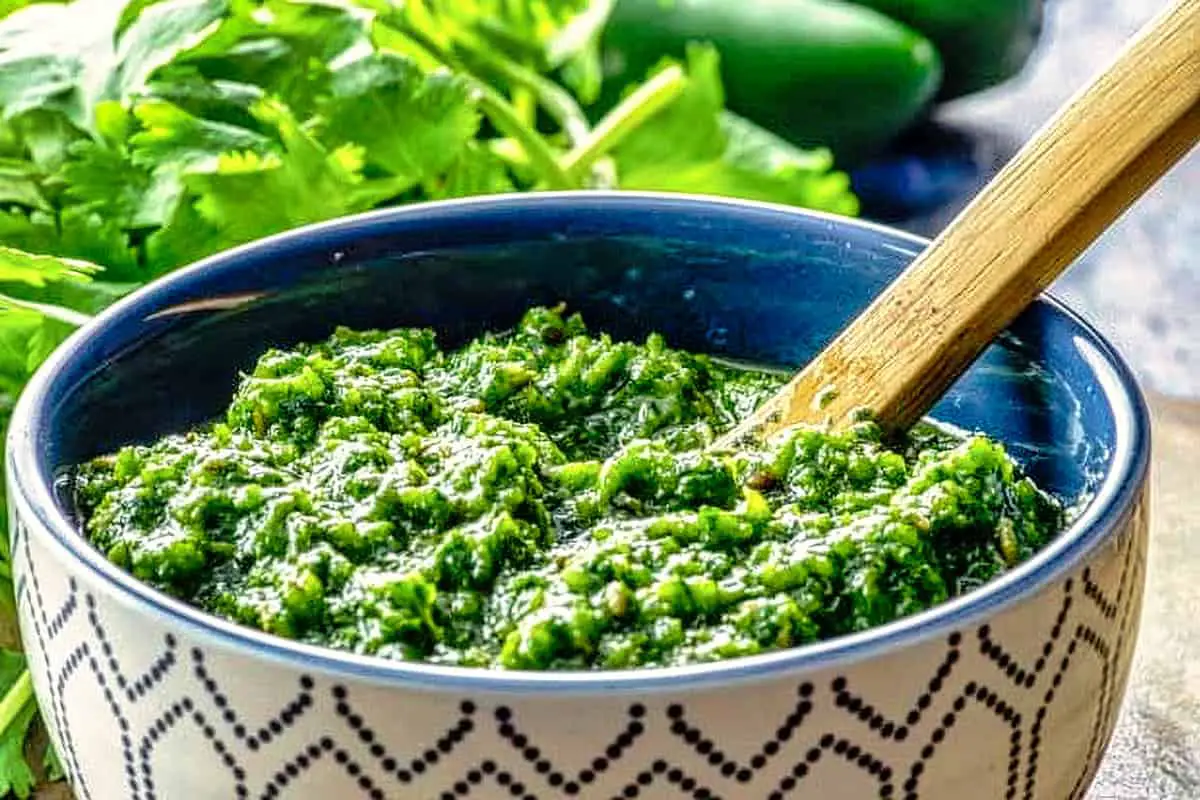
Deliciously addictive, Schug will replace your favorite hot sauce faster than you can say “Pass Me the Water!” Schug, the spicy Yemenite condiment that accompanies nearly every Yemen food, is much more than a hot sauce; it’s a savory (often hand-ground) mixture of chili peppers and spices that delivers an earthy, bright heat to vegetables, rice, and other dishes.
Our Schug blends together jalapeno peppers (seeds and membrane removed), fresh cilantro, extra virgin olive oil, garlic, salt, coriander seeds, and cumin seeds. Place all ingredients in a food processor and blend until smooth. Store it in a glass mason jar in the refrigerator.
16. Yemeni Shakshouka (Spiced Scrambled Eggs) from Tara’s Multicultural Table
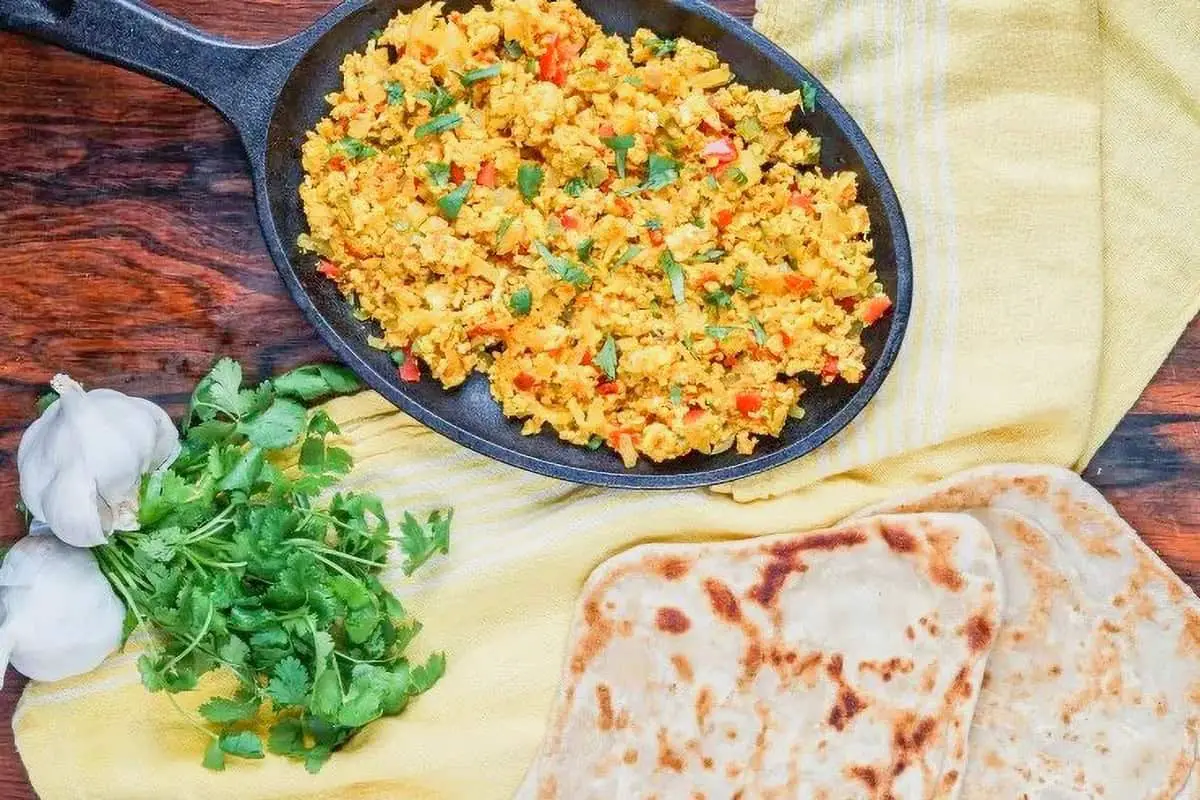
A Yemeni recipe for Shakshouka (Yemeni Spiced Scrambled Eggs). These scrambled eggs are wonderfully spiced with turmeric and cumin for a quick and delicious meal.
Shakshouka is an egg Yemeni recipe popular throughout the Middle East and Northern Africa. In Aden, Yemen and surrounding areas, the eggs are often scrambled into the tomato mixture instead of being poached on top. The exact spices may vary based on region and family.
For this particular Yemen food, I seasoned the eggs with onions, garlic, tomatoes, chili, cumin, turmeric, and cilantro. I have also seen other recipes add more vegetables such as sliced potatoes.
17. Saluf (Yemenite Flatbread) from Food Lizsteinberg
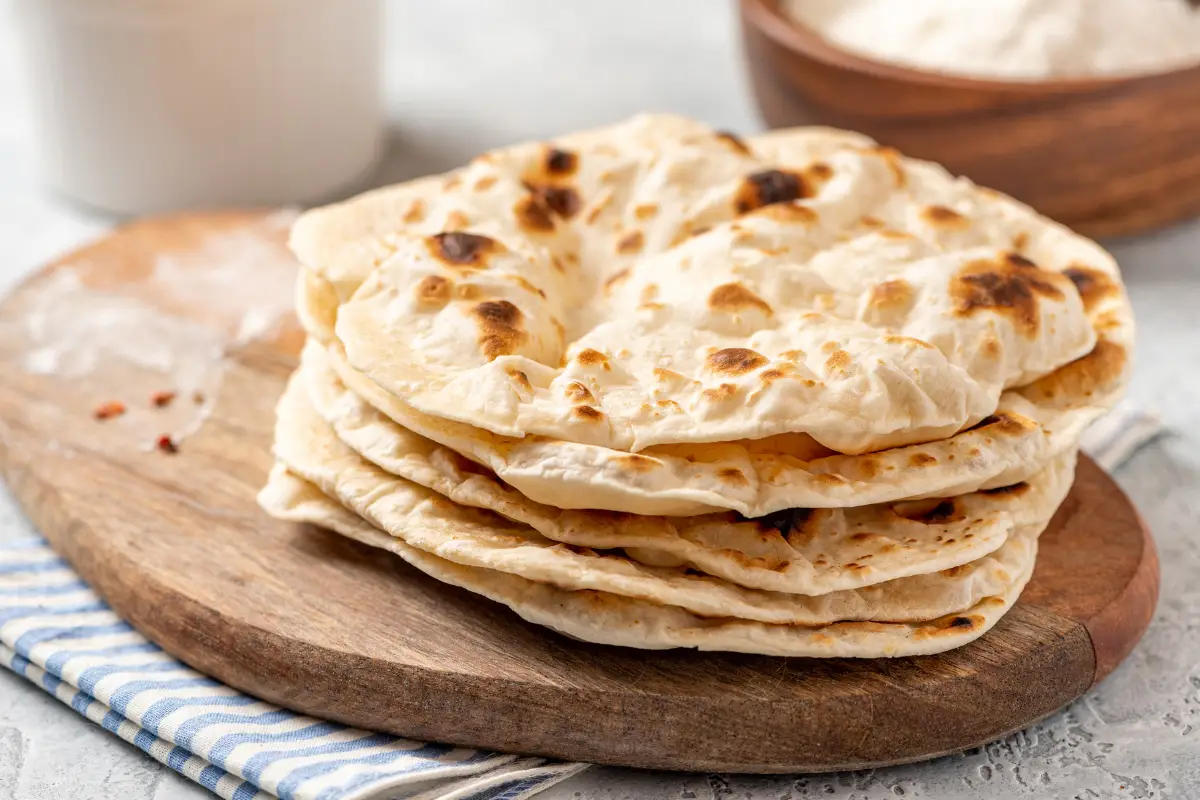
Both kinds of Yemenite pitas can be eaten alongside salads, soups or stews, which is generally how they’re served at the restaurants in the Yemenite quarter. I’ll often fry lahoh filled with egg to make a Yemenite omelet, a quick meal that I learned from my friend Irit, who has a tiny restaurant in the neighborhood.
Saluf I’ll eat as is — in theory it could be used with spreads, but it doesn’t usually last long enough. You can make lahoh and saluf at home, although I often find it more convenient to buy them.
I generally don’t want more than one or two at once, and they’re best fresh. But then again, not everyone has this as an option — maybe you don’t live close enough, or maybe you simply can’t make it to the Yemenite quarter before noon, at which point most places run out.
18. Bint al Sahn from 196 Flavors
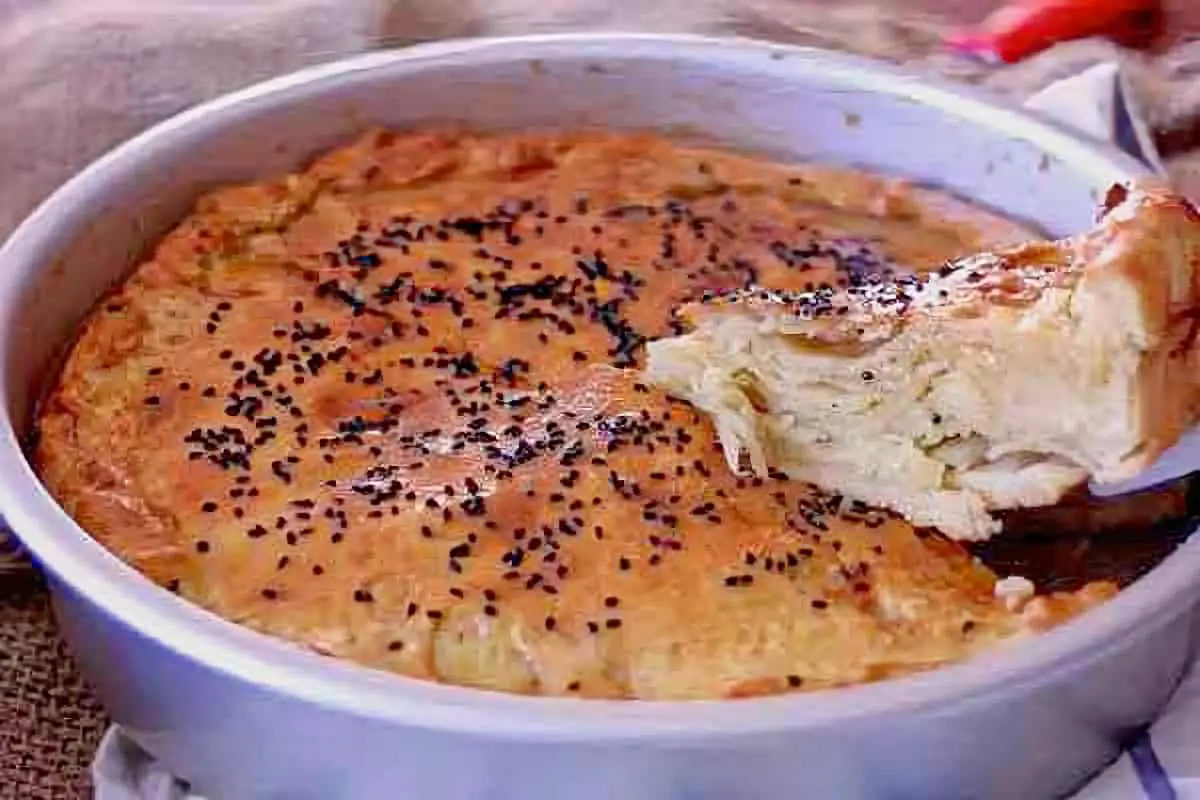
Bint al sahn is a delicious traditional Yemen food that is deliciously covered with honey as soon as it comes out of the oven.
Bint al sahn (or “daughter/beauty of the plate”) is the most traditional dessert served in Yemen. It is a honey cake which is reminiscent of baklava, considering the presence of butter and the superposition of thin layers of dough, as well as French kouign-amann, for the flaky texture.
The cake is topped with egg yolk and black seeds, usually nigella seeds or black sesame. Finally, in addition to the rather large amount of butter in this traditional recipe, it is traditional to drizzle a good amount of honey on top of the cake as soon as it comes out of the oven.
You May Want to Join Our Boondocking Group on Facebook For More Information
You May Want to Join Our Campfire Recipes Group on Facebook For More Information
